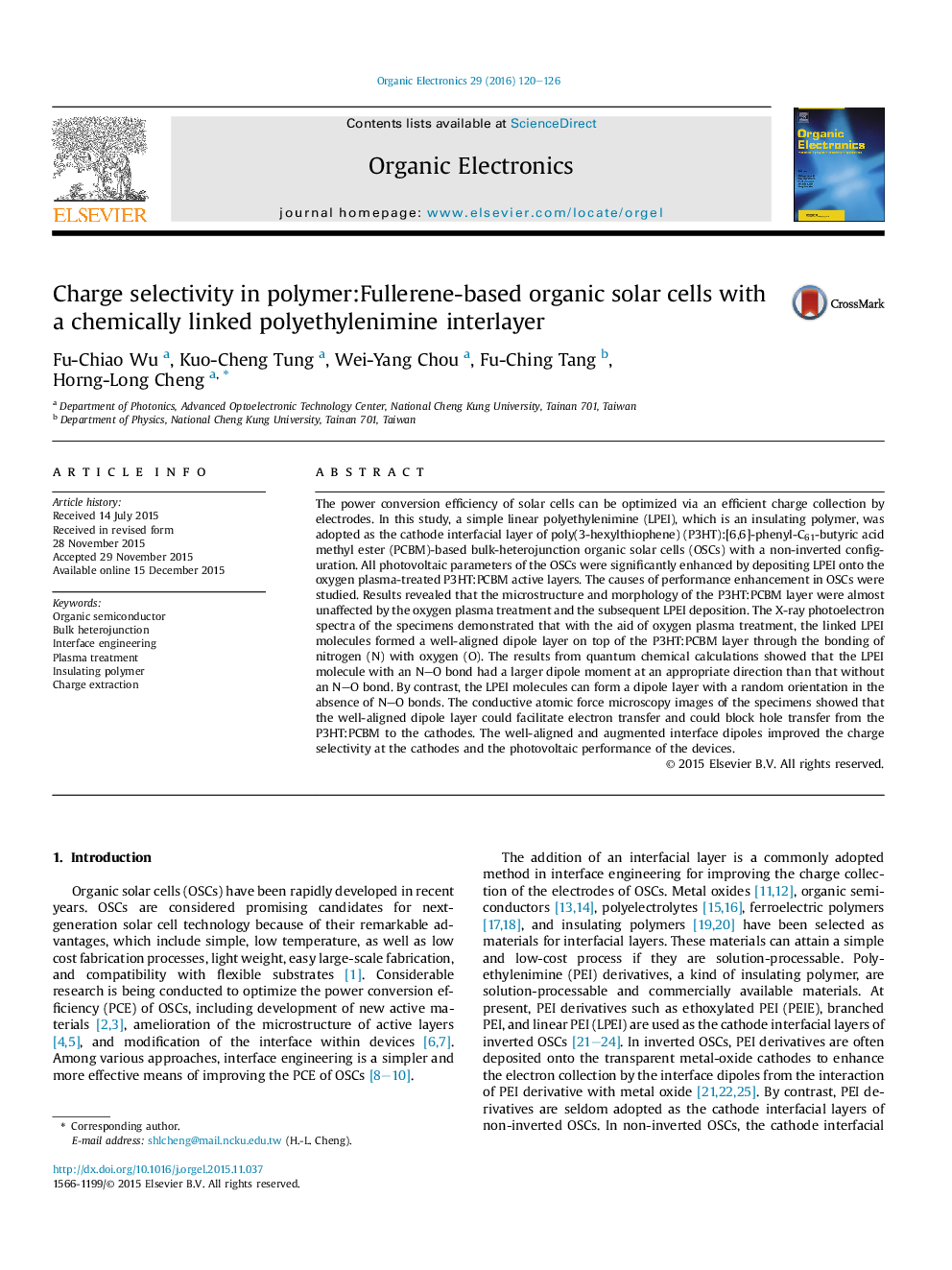| کد مقاله | کد نشریه | سال انتشار | مقاله انگلیسی | نسخه تمام متن |
|---|---|---|---|---|
| 1264271 | 1496828 | 2016 | 7 صفحه PDF | دانلود رایگان |

• We engineered the cathode of OSCs by a chemically linked LPEI interlayer.
• All photovoltaic parameters of the OSCs were significantly enhanced.
• Improved photovoltaic was explored via experimental and theoretical methods.
• A well-aligned and augmented LPEI dipole layer formed at the cathode interface.
• These interface dipoles could improve the charge selectivity of the cathode.
The power conversion efficiency of solar cells can be optimized via an efficient charge collection by electrodes. In this study, a simple linear polyethylenimine (LPEI), which is an insulating polymer, was adopted as the cathode interfacial layer of poly(3-hexylthiophene) (P3HT):[6,6]-phenyl-C61-butyric acid methyl ester (PCBM)-based bulk-heterojunction organic solar cells (OSCs) with a non-inverted configuration. All photovoltaic parameters of the OSCs were significantly enhanced by depositing LPEI onto the oxygen plasma-treated P3HT:PCBM active layers. The causes of performance enhancement in OSCs were studied. Results revealed that the microstructure and morphology of the P3HT:PCBM layer were almost unaffected by the oxygen plasma treatment and the subsequent LPEI deposition. The X-ray photoelectron spectra of the specimens demonstrated that with the aid of oxygen plasma treatment, the linked LPEI molecules formed a well-aligned dipole layer on top of the P3HT:PCBM layer through the bonding of nitrogen (N) with oxygen (O). The results from quantum chemical calculations showed that the LPEI molecule with an N–O bond had a larger dipole moment at an appropriate direction than that without an N–O bond. By contrast, the LPEI molecules can form a dipole layer with a random orientation in the absence of N–O bonds. The conductive atomic force microscopy images of the specimens showed that the well-aligned dipole layer could facilitate electron transfer and could block hole transfer from the P3HT:PCBM to the cathodes. The well-aligned and augmented interface dipoles improved the charge selectivity at the cathodes and the photovoltaic performance of the devices.
Figure optionsDownload as PowerPoint slide
Journal: Organic Electronics - Volume 29, February 2016, Pages 120–126